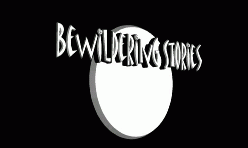William Gibson, All Tomorrow’s Parties
reviewed by Danielle L. Parker

|
|
All Tomorrow’s Parties Author: William Gibson Publisher: G. P. Putnam, 1999 Length: 278 pp. ISBN: ISBN: 0-399-14579-6 Price: varies |
I felt a certain sense of trepidation when I started this review of William Gibson’s All Tomorrow’s Parties. I mean, this is Mr. Cyberpunk himself, the man rumored to have envisioned the Internet before it was a gleam in the eye of Al Gore’s campaign manager. There’s a hard core of readers out there to whom Gibson is The Guru, spoken of in reverential terms and argued over in Internet chat rooms. Those fans have already read this book and everything from Neuromancer on. Well, they can help me spread the word. For all their bleeding-edge futurism, Gibson’s books represent an old-fashioned virtue of speculative fiction, one that’s been there since Mary Shelley dreamed of the scientifically created monster and Jules Verne of an undersea ship. These are books of ideas. Uncomfortable stuff that’s supposed to make the reader think. They are, in short, what separates speculative science fiction from the rest of the genres and what makes me, at least, a fan.
I suppose All Tomorrow’s Parties is a fairly typical Gibson. It’s not for everyone. It’s raw, and not just in the language. Its vision of the near future has nothing to do with Middle America Comfortable. There are drugs and muggers. The ruined Golden Gate Bridge has been colonized by the desperate. One of the key characters lives in a cardboard box and survives on cough syrup and an alcohol-caffeine-nicotine concoction. Philip K. Dick would recognize the territory. So would modern city planners, in their nightmares.
Colin Laney’s body is sick, but he doesn’t really care. He’s not into his body much. In his cardboard box below Tokyo’s streets he lives through his virtual reality eye phones and the DatAmerica flows that flood his head. Laney’s mind isn’t normal either. Clinical trials of a drug called 5-SB have done... something... to him. Laney sees the End of the World As We Know It coming. There’s a quantum shift ahead, something on the par with the dawn of the Machine or the Atom. He doesn’t know exactly what it is.
But he knows the shift is going to happen first in San Francisco. Laney’s got to move his players there fast. Because there’s someone else, someone with the 5-SB gift of sensing the convergences, who sees it coming, too. And Harwood wants to be sure he’s still a kingpin in the New Order. If it takes violence to wrench the change to his benefit, well, he’s up to it. He’s bought the best.
But sometimes the unexpected happens. The kick of a cow transforms Chicago from wood to stone. The death of Madame Curie’s husband helps usher in the Age of the Atom. And in this future San Francisco, a homeless man, a failed cop, a damaged boy and a lone killer who lives in an endless moment might help launch Laney’s new paradigm in a way that Mr. CEO Harwood doesn’t quite anticipate.
All Tomorrow’s Parties delivers the bleeding edge futurism that will thrill hard-core Gibson readers. There’s nano-technology and virtual humans; information inversions and an futuristic Internet grown by accretion to something a little bit outside human control. Those who suffer headaches from high-tech can read it for the sort of fast ride that, say, A. E. van Vogt’s Null-A series provided readers in an earlier era: i.e., not sure what’s happening here, but it’s a heck of a fast ride! And both kinds of readers will find, like the rainbow beauty of an oil slick in a dirty street puddle, that there’s a gleam of something bright at the end. It’s strange to discover, at the end of this painfully raw vision, that this is an essentially hopeful story.
I don’t really know how well Gibson’s books will read, say, five or ten years from now. They may date. Right now, though, they form a sort of mythos for the age of global information technology. And I suspect, even if the world changes in ways Mr. Gibson hasn’t anticipated, the Guru will still be out there riding the crest of that endless wave into the future. Ride on, Mr. Gibson!
Copyright © 2005 by Danielle L. Parker

